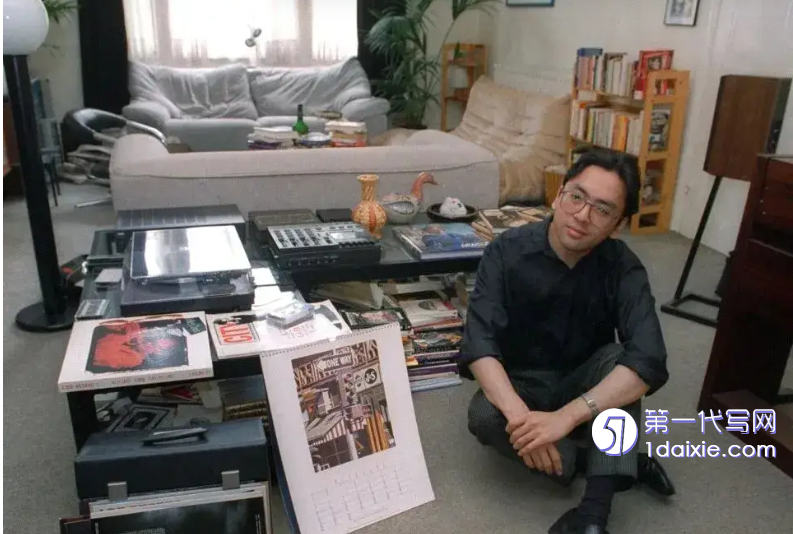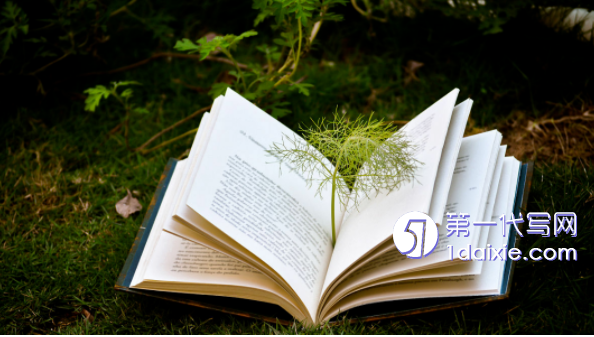本文是一篇英语论文,本文首先论述了文学伦理学基本理论框架及支撑本文的伦理学术语;其次从伦理环境出发,探讨异化下的科技伦理环境表征及对人与非人的影响。除此之外,文章探讨两部小说中的伦理身份及伦理选择,“类人”性克隆人到“非人”性人工智能机器人的变奏融入了石黑一雄对陌生化叙述视角的再思考。
Chapter One Introduction
1.1 Research Background
Never Let Me Go(2005)[1]and Klara and the Sun(2021)[2]are two fictions withthe same theme“science”that were released 16 years apart.Changes occurred in theworld because of the technological revolution,and“fiction writing in literature willinevitably reflect these changes”[3].Ishiguro stated that there has been a significantchange in people’s attitudes towards science fiction literature between the creation oftwo works.“When I published Never Let Me Go,all the questions were about‘whyhave you written the science fiction novel’...It’s like science fiction has becomemuch more the mainstream,because I think there’s a recognition that science andtechnology’s rapid changes are occurring to us all”(Ishiguro,2021).To some extent,the juxtaposition of two science fiction works is not only a new exploration ofIshiguro’s own science perspective,but also provides researchers with the possibilityof diachronic research.
Never Let Me Go was Kazuo Ishiguro’s first attempt and exploration of sciencefiction themes,it was set in the 1990s in England,during which gene editing waspushed to the forefront.Ishiguro continued to use memory as the keynote of Never LetMe Go,incorporating technological elements for the first time,which led M.JohnHarrison stated that“this novel will be described as science fiction,”but importantly,“there’s no science here”[4].This precisely indicates that Ishiguro’s science fictionworks have been defined by some scholars as“soft science fiction”since inception,differing from the conventional“hard science fiction”,such as 2001:A SpaceOdyssey(1968)by Arthur C.

1.2 Literature Review
Kazuo Ishiguro,along with Vidiadhar Surajprasad Naipaul(1932-2018)and SirSalman Rushdie(1947-),is known as the“Three Great British Immigrant Writers”.Since winning the Nobel Prize of Literature in 2017,there shows a positivecorrelation in academic circle of Ishiguro’s research.The comments and research onIshiguro by domestic and foreign scholars began in the late 20th century,and one ofthe earliest articles was Gregory Mason’s“An Interview with Kazuo Ishiguro”[7]based on his conversation with Ishiguro,which occurred after his Whitbread BookAward in 1987.The main content revolves around his work An Artist of the FloatingWorld,providing readers with a general understanding of his early works.In 1991,Alan Warda and Kim Herringer conducted another interview with Ishiguro,whichlinked his cultural and national differences before leaving Japan at the age of six and after living in the UK,and more comprehensively combined Ishiguro’s achievementswith the cultural and historical background of his immigration status.The interviewenriched the connotation of Ishiguro’s research.The portfolio Kazuo Ishiguro:NewCritical Visions of the Novels[8],coauthored by Sebastian Gross and Barry Lewis,provides an exhaustive collection of most of Ishiguro’s works and viewpoints.Thework proposes eighteen new perspectives which leads more mature critics havereassessed the works of Ishiguro.The number and popularity of research on Ishiguroin China have gradually increased in recent years.The paper“Overview of Ishiguro’sNovel Research”[9],coauthored by scholars Deng Yingling and Wang Fei,provides acomprehensive overview and introduction of Ishiguro’s research status bothdomestically and internationally,providing readers with a general understanding andunderstanding.
Chapter Two Theoretical Background
2.1 The Development of Literary Ethics
Ethics is a science that encompasses various branches such as psychoanalyticethics,technological ethics,and medical ethics,with moral issues as its essence.Itbelongs to the branch of philosophy.The earliest systematic interpretation of ethicswas the philosophical work Ethica Ordine Geometrico Demonstration(1677)createdby the Dutch philosopher Baruch de Spinoza.The book uses geometric methods,starting from epistemology and ontology,to derive the highest concept of ethics“freedom”,and is a distinguished reference in the field of philosophy.The CollinsAustralian Dictionary(2003)defines ethics as“the philosophical study of the moralvalue of human conduct and of the rules and principles that ought to govern it”.Therefore,the study of literature and ethics needs to be combined with the inherentmoral principles or values in literature.In recent years,with the rise ofinterdisciplinary research,the interweaving of ethics and literature has graduallyattracted widespread attention from literary theorists.
As early as the mid to late 19th century,ethical research emerged in the West,forinstance,Ralph Waldo Emerson’s“An Origin Delivered before the Literary Societiesof Dartmouth College”in 1838,and Charles White’s“Essays on Literature and Ethics”in 1853,which comprehensively discuss the educational and moral functions ofliterature from the perspectives of religion,philosophy,and ethics.Since the early20th century,ethical research has maintained the basic characteristics of Westernliterature research in the 19th century,but made significant progress comparatively.Some critics who conduct ethical criticism of literary works from differentperspectives have published important academic works.Such as the ethics and ethicalreligion in Harold Bayley’s The Shakespeare Symphony:An Introduction to theEthics of the Elizabeth Drama[35].In the 21st century,ethical research in Westernliterature is more in-depth than ever before.Scholars in the field of literary theorybegan to attach greater importance to the exploration of ethical aspects in literature.Inher article“Literary Ethics and the Novels;Or,can the Novels Save the World?”[36],scholar Shady E.
2.2 Basic Concepts of Literary Ethics
Multiple branches disperse within literary ethics,and the paper mainly deals withethical identity,ethical consciousness,ethical dilemmas,and ethical environment.Based on theoretical foundation to Nie Zhenzhao,the study is unfold in followingmain prospects.
Ethical Identity
According to Nie Zhenzhao,the choices of identity of human beings can bedistinguished in two aspects including natural choice and ethical choice,which theformer means human recognize themselves from beasts in surface,the latter meansthat human realize the importance of responsibility,moral and other notions of selves.That is the significance of literary works solve the problem of human identity bydescribing how individuals make self choices.
In literary texts,all ethical issues often arise related to ethical identity,which canbe classified as,for instance,identity based on kinship,ethical relationships,moralnorms,collection and social relation,and those based on professions.It is exampledby the famous tragedy Oedipus in the light of Nie Zhenzhao.Oedipus possesses twoethical identities,namely the kinship with his biological parents and the ethicalidentity with adoptive parents.Hamlet is no exception.In his ethical consciousness,besides his biological father,stepfather Claudius is also one which roles as ethicalkinship-Ethical identity is a prerequisite for moral behavior an moral norms,and itimposes constraints on the subject of moral behavior,sometimes even mandatoryconstraints,that is,constraints reflected through ethical taboos-Claudius inheritedthe throne by marrying Gertrude,and thus obtained the status of king and stepfatherof Hamlet.
Chapter Three Ethical Environment of Never Let Me Go and Klara and the Sun183.1 Ethical Environment in Never Let Me Go...........................18
3.1.1 Hailsham:the Disorder of Ethics among the Special Group..............19
3.1.2 Cottages:the Connection Between the Past and the Future................21
Chapter Four Ethical Identity and Ethical Selection of Never Let Me Go and Klaraand the Sun.................................36
4.1 Variation of the Clones and the Artificial Intelligence......................36
4.1.1 Humanoid Narrator Kathy.......................37
4.1.2 Non-human Narrator Klara.......................39
ChapterFive Ethical Dilemma of Never Let Me Go and Klara and the Sun..............52
5.1 The Construction of a Community under Post-human Era.............................52
5.2 Ethical Dilemma in Never Let Me Go:Tragic Fate of the Clones..................54
Chapter Five Ethical Dilemma of Never Let Me Go and Klaraand the Sun
5.1 The Construction of a Community under Post-human Era
Human is entering an era where ethical and scientific selections are intertwined.For any discipline,the relationship between humans and machines is a major issuefacing the world at present.Humanities is no exception.It is committed to writingabout the double-sided possibilities brought by technological achievements,exploringthe harmonious coexistence between humans and machines,which is to some extentan aspect of constructing an ecological community.Under the writing of Ishiguro,Never Let Me Go and Klara and the Sun showcase the flow of power relationsbetween humans and non-humans from different perspectives,as well as express theprospect of establishing a harmonious organic community in the future.As discussedin the previous section,humans define the clones as“waste”and“debris”,indicatingthat humans construct standards based on themselves to exclude groups that do notconform to social order;The story of Klara and the Sun always revolves around theissue of whether robots can replace humans.While humans create and determine the fate of robots,they also face the threat of being backfired.Therefore,the two novelscomplement each other in terms of the relationship between humans and non-humans:the former focuses on the dilemma of non-humans,while the latter emphasizes thesignificance of human survival.But their commonality lies in how to handle suchrelationships and build a harmonious ecological community.

Chapter Six Conclusion
In the evolving technological landscape of the post-human era,the humanitieshave been engaged in diverse pursuits.Kazuo Ishiguro,as one of the leading figures,has seamlessly integrated innovative thinking and variations into his science fictionoeuvre spanning 16 years.His works center on the survival logic of individuals indiverse contexts,offering readers a profound exploration of the intricate fusion andcollision between technology and human emotions.The approach not only continuesthe path of humanistic concern,but extends the boundaries of science fiction,promoting a deeper understanding of the human condition in a rapidly evolvingtechnological world.Never Let Me Go is set against the backdrop of cloningtechnology,focusing on the ethical concepts of humans in the gaps of survival;Klaraand the Sun focuses on the challenges and problems that humans and robots facesimultaneously in the era of scientific selection.Both of the two constitute the unique“soft science fiction”writing mode of Ishiguro,providing a new track for humanrethinking and interdisciplinary research in the technological society.
Throughout the entire text,during the stage of Never Let Me Go,it seems notbeing emphasized deliberately of the tragic fate of the clones providing organs,which is related to Ishiguro’s writing intention.“I was always trying to find ametaphor for something very simple-it sounds rather grand-but,a metaphor for thehuman condition,and for coming to terms with the fact that we’re not immortal,thatwe’re here for a limited time...They think about why they’ve been educated andwhat’s important in their lives.That’s all a metaphor for what we all do in the realworld”.Through analysis from different ethical perspectives,this is equally evident:the text avoids explaining the complex creative background and intentions of clonedhumans and erases all“aggressive temperament”.Clones,no matter how they positionthemselves or make choices in difficult situations,never question the deprived lifeand the fate of resistance.They tragically define themselves as“garbage”and“waste”,but also accept the limitations of their disciplined childhood and the“small world”,but perhaps because of this,they tries their best to fulfill all their meaning in aprogrammed life.
reference(omitted)
